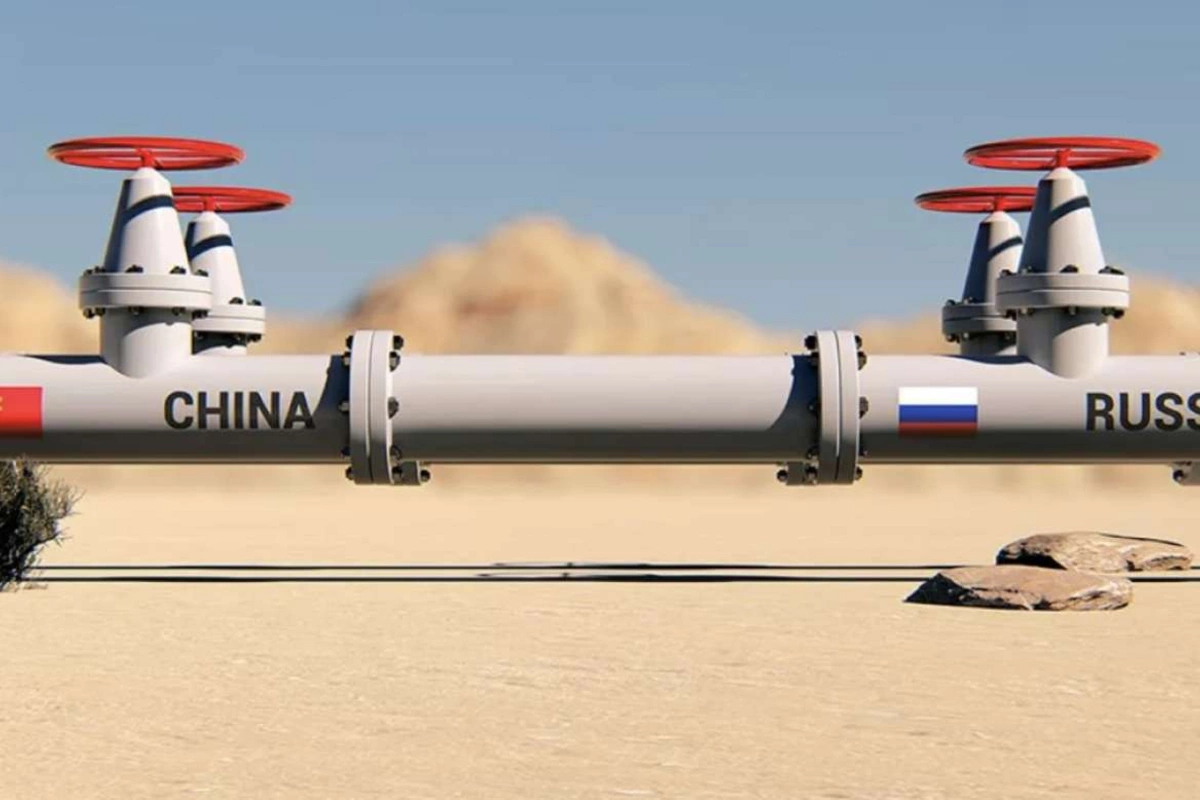
Kazakhstan stands to benefit not only from transit fees, but could also import some Russia gas for regions in northeastern Kazakhstan that are desperately in need of more energy sources.
Google images
Russia is continuing its efforts to shift its natural gas exports from Europe to Asia and is planning a new pipeline route to China that would transit through Kazakhstan, The Caspian Post reports citing The Times of Central Asia.
Kazakhstan stands to benefit not only from transit fees, but could also import some Russia gas for regions in northeastern Kazakhstan that are desperately in need of more energy sources.
The Russian plans are bad news for Turkmenistan as China is Turkmenistan’s main gas customer and Turkmen authorities were hoping to sell China even more gas.
On November 15, Russian Deputy Prime Minister Aleksandr Novak mentioned the pipeline plan on the sidelines of a Chinese-Russian forum in Kazan, Russia. Novak said such a project is still only being discussed, but Russian media outlet Kommersant wrote on November 18 that there are already three options for the pipeline.
All three possibilities pass though northeastern Kazakhstan, but Kazakhstan’s level of participation in the pipeline is different in each variation.
One of the projects would require Kazakhstan to build a pipeline for gasification of the northeastern Pavlodar, Abai, and Karaganda provinces. A second proposal would include only the Abai and Zhetysu provinces.
Russian gas giant Gazprom’s financial obligation also changes depending on the pipeline project selected. The most expensive option for Gazprom would cost more than $10 billion to construct and would not operate at full capacity until 2034.
All versions foresee at least 35 billion cubic meters of Russian gas (bcm) shipped via the pipeline with Kazakhstan receiving some 10 bcm, which would greatly alleviate recent power shortages in northeastern Kazakhstan.
Despite Novak saying the pipeline project was only being discussed, Kazakhstan and Russia appear well along in their planning.
In early May, Kazakh Ambassador to Russia Duaren Abayev gave an interview to Russia’s TASS news agency and mentioned there was a “roadmap” for supplying 35 bcm of gas to China via Kazakhstan.
Russia already exports gas to China via the “Sila Sibiri” (Power of Siberia) pipeline and expects that in 2024 the pipeline will for the first time reach its full capacity of 38 bcm.
Construction of Sila Sibiri-2 with a planned capacity of some 50 bcm has been delayed due to China’s reluctance to loan Russia money for construction, differences over price, and China’s increasing purchases of liquefied natural gas (LNG). Novak commented on Sila Sibiri-2, saying the pipeline project involving Kazakhstan was separate and the Russian government will continue to negotiate with China about construction of Sila Sibiri-2.
Russia is seeking to replace its former main customer, the European Union.
Prior to the Kremlin launching its full-scale war on Ukraine in February 2022, the EU was buying between 150-160 bcm of Russian gas annually. The EU sharply cut back on Russian gas imports in response to the invasion of Ukraine and in 2023 imported less than 43 bcm.
Russia’s pivot to Asia for gas exports targets the Chinese market, but Gazprom is looking to take any possible Asian customers and has found some in Central Asia.
Russia’s surge into the Asian gas market comes at the expense of Turkmenistan, the country with the world’s fourth largest gas reserves.
Kazakhstan and Uzbekistan have traditionally been gas exporters, but both countries have suffered severe gas shortages in recent years, particularly during the winter, and are focused on using domestic gas for domestic consumption.
Both were in talks with Turkmenistan to buy Turkmen gas.
Uzbekistan signed a deal in December 2022 to buy some 1.5 bcm of Turkmen gas and signed a short-term contract for 2 bcm in August 2023. Gazprom, though, has swooped in and signed deals with both Kazakhstan and Uzbekistan, supplying Kazakhstan with some 7.25 bcm and Uzbekistan with 1.22 bcm in 2023.
Gazprom later signed a contract to annually supply Uzbekistan with up to 11 bcm as early as 2025.
Turkmenistan’s contract to sell some 5.5 bcm of gas to Russia just expired and will not be renewed, forcing Turkmenistan to arrange a complicated gas swap deal involving Iran to sell some 10 bcm to Iraq.
China has been Turkmenistan’s largest gas customer for 15 years, and with the expiration of the Turkmen-Russian gas contract, is really the only significant customer for Turkmen gas. In recent years, China has been purchasing up to some 35 bcm annually, but this agreement is now in jeopardy.
One of the possible routes for shipping Russian gas to China involves using the pipelines that carry gas from Turkmenistan to China (Central Asia-China pipeline). The Kommersant article reported that some 25% of those three pipelines’ capacity is currently not being used.
Since the pipelines pass through the territories of Uzbekistan and Kazakhstan, both of those countries can export up to 10 bcm each of their own gas. However, Kazakhstan and Uzbekistan now need to import Russian gas to meet domestic needs, and neither is exporting much of their gas to China.
Turkmenistan has more than enough gas to fill the spare capacity, but seems to have been outmaneuvered by Russia.
If China decides to buy 35 bcm of Russian gas through the Central Asia-China pipeline, Turkmenistan’s share of gas shipments could drop to 20-30 bcm.
Turkmenistan has also been hoping for years that the fourth strand of the Central Asia-China pipeline would be realized. Line D from Turkmenistan would pass through Uzbekistan, Tajikistan, and Kyrgyzstan before reaching China and would carry 30 bcm of solely Turkmen gas.
China now has a choice; if Beijing opts to boost gas imports via pipeline from the east, Gazprom probably will need a loan from China, but will also likely spend some of its own money from the time construction starts on pipelines to the Chinese border.
Turkmenistan and the other three Central Asian countries through which Line D is planned to pass will all need substantial loans from China, covering nearly the entire cost of pipeline construction.
Turkmenistan paid for the construction of its sections of Lines A, B, and C, as well as Chinese development of gas fields in Turkmenistan, through its gas shipments to China.
Beijing simply took some of the Turkmen gas as payment for the loans and could do so again, not only in the case of Turkmenistan, but also with Russia.
It will be more difficult, especially for Tajikistan and Kyrgyzstan, to repay Chinese loans for construction of the pipeline through their territories. Both countries are already deep in debt to China for other projects China has funded and built during the last 20 years.
China has no urgent need for more gas and has already diversified its sources of gas import both for pipelines – there is also a pipeline from Myanmar – and LNG suppliers. That leaves China in an excellent position to bargain over the price of either Russian or Turkmen gas, but leaves Turkmenistan at a disadvantage that could see its gas revenues plummet if Russia’s plan for exporting gas through Kazakhstan is accepted by China.
Share on social media

Kazakhstan stands to benefit not only from transit fees, but could also import some Russia gas for regions in northeastern Kazakhstan that are desperately in need of more energy sources.